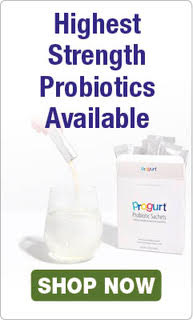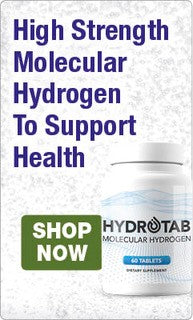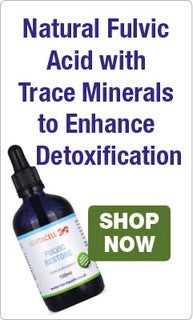Most of us do not express any symptoms of high blood pressure until it's too late, and the only way to find out if it's high is to get tested. That's why, for one week every year, Blood Pressure UK encourages you to attend local blood pressure stations to have your BP taken.
Managing your blood pressure is essential if you want to decrease your risk of chronic conditions including heart disease, stroke, peripheral arterial disease (restriction of blood supply to your limbs), kidney disease, vascular dementia, mild cognitive impairment and eye problems.
Factors that can influence your ability to develop hypertension include stress, being overweight, lack of exercise, poor diet, smoking, insufficient sleep and excessive caffeine and alcohol intake.
You may also be more at risk if you have a family history of high blood pressure, or are of African or Caribbean descent.
However, did you know that there is a lot you can do naturally to regulate your blood pressure and reduce your chances of developing it?
Here are nine things you can do to help.
1) Take a daily probiotic
While more investigation is needed to confirm the benefits, research pooling data from nine studies involving hundreds of people with normal or high blood pressure showed promising results for daily probiotic consumption effecting a moderate decrease in blood pressure.
Key points to note from this research are that high blood pressure, from 130/85 mm Hg or more, benefits the most from probiotic supplementation. It also takes a minimum of eight weeks before you start seeing results.
The quality of the probiotic supplement is also crucial.
Researchers found that probiotics with less than 10 billion CFUs (colony-forming units) and only single probiotic strains did not provide significant positive results.
Progurt Probiotics are a super- strength gut formulation, with each sachet containing one trillion CFUs, around 40 times as much as other market-leading probiotics.
They are made up of Human Probiotic Isolates (HPI), bacteria identical to that found in a healthy human gut. They help to restore the microbiome you were born with and work in harmony to achieve a healthy, more naturally balanced gut.
Progurt Probiotics contain multiple strains, including missing and fragile ones.
2) Find ways to manage stress effectively
Whether it’s related to everyday concerns, work worries or both, there’s no doubt that unchecked stress can put your body under significant pressure, and potentially ravage your health.
So it’s essential to be self-aware and find efficient ways to cope with the stresses and strains of life. There are all sorts of ways you can help to manage your stress and calm anxiety. You just need to find methods that specifically work for you.
Some people find daily meditation and deep breathing exercises very beneficial. It doesn’t have to take long, and you’d be amazed at how a short ten-minute meditation can make a world of difference to how you’re feeling.
Other ways to relieve stress include yoga, listening to music, spending time with friends and loved ones, walking in nature, practising gratitude, exercising, making time for fun, and learning to let go.
Effective time management, not overwhelming yourself by taking on too much, and delegating tasks can all help to create a more general feeling of calm.
3) Take regular exercise

Regular exercise increases heart strength, gets your blood pumping, and takes the pressure off your arteries, decreasing blood pressure.
Regularly walking at a brisk pace, and taking the opportunity to move as much as possible is an excellent start.
Get out and about as much as you can, organise walks with friends or family at the weekends, spend time moving in nature. Take the stairs whenever you can, and briskly walk an extra bus, tube or train stop.
You’ll be surprised how easy it can be to become more active in your everyday life.
Other cardiovascular exercises like cycling, running, swimming, or rowing are also brilliant. Aim for 30 minutes of physical activity a day.
4) Eat nitrate-rich vegetables
If you suffer from hypertension, research shows that nitrates can help to lower blood pressure and keep the blood vessels healthy.
Lots of fruits and vegetables contain nitrates, but some have exceptionally high concentrations such as rocket, rhubarb, basil, spring greens, lettuce, coriander, swiss chard, beetroot greens, other leafy greens, celery and beetroot.
Try to include generous portions of these vegetables every day. When eaten, nitrates convert into nitric oxide, a potent vasodilator that improves blood flow. There are few nutrients better for the cardiovascular system.
5) Take Garlic, Olive Leaf or CoQ10
Garlic has been shown to lower systolic blood pressure where it is already high. It is also thought to raise nitric oxide production, which can help to lower blood pressure.
Some research also supports the use of olive leaf extract (preferably 1000mg daily) for reducing hypertension. This may be due to its ability to block calcium from entering the cells of the heart and blood vessels and ease arterial stiffness.
CoQ10 has heart-protective benefits, and according to research, can have beneficial effects for patients with hypertension.
6) Eat a clean, wholesome diet and restrict sugar
Evidence suggests that a diet high in sugar and simple carbohydrates leaves you more susceptible to all kinds of chronic illness and disease, including hypertension.
It pays to be mindful of the foods you eat and temper your consumption of those containing sugar.
Make sure you check food labels and get educated on the countless names it has, such as dextrose, fructose, barley malt, agave nectar and corn syrup.
Avoiding sugar also applies to refined, simple carbohydrates like processed junk foods and white bread and pasta. Regularly eating these can lead to blood sugar spikes and weight gain, both of which can contribute to high blood pressure.
Try replacing sweet treats with fibre-packed foods like an apple, pear or a handful of heart-healthy berries, nuts and seeds.
You could also replace unhealthy savoury snacks such as crisps, pretzels or popcorn with kale crisps, nut butter and oatcakes, vegetables and houmous, or a small handful of nuts.
Exchange your white bread, pasta and rice for brown wholegrain versions. Try fortifying foods like buckwheat, quinoa and amaranth too.
7) Prioritise magnesium

Insufficient magnesium can contribute to high blood pressure as it aids heart function, relaxes blood vessels and helps to regulate blood sugar.
Conversely, cardiovascular disorders, including hypertension, can deplete magnesium levels.
Stress will quickly drain your magnesium stores too, so it’s vital to ensure you are eating a multitude of magnesium-rich foods every day.
Think green leafy vegetables including kale, spinach and chard, pumpkin seeds, almonds, black beans, butter beans, avocados, artichokes, peas, sweet potatoes, figs, at least 85% plain chocolate and bananas.
Taking a regular evening soak in Epsom salts can also help. Make sure the water is not too hot, and that you bathe for forty minutes, which should be enough to absorb the magnesium through your skin.
If you’re not into baths, try a foot soak instead.
You might also consider taking a natural, clean, highly absorbable magnesium supplement. The RNI is 300mg daily for men and 270mg daily for women, with the “safe upper level” set at 400mg daily.
If in doubt, seek advice from a healthcare professional.
8) Consider salt + potassium
Increased sodium can contribute to high blood pressure for those with a sensitivity to it. So if you already suffer from hypertension, it might be a good idea to moderate your salt intake and see if it makes a difference for you.
That said, not eating enough salt can be harmful, and the evidence against salt is far from conclusive. Good-quality salt supplies vital minerals that significantly benefit our health, staving off chronic disease.
For more information, read The Salt Fix by Dr James DiNicolantonio. Or if you don’t fancy reading the whole book, read our summary of it.
It’s essential to eat good-quality salt as the ordinary table salt added to processed, packaged foods and found in most restaurants is refined, with most of the beneficial elements removed. It also contains anti-caking agents to stop it from clustering together.
Natural salts such as Himalayan salt have a far superior mineral profile and no additives, making it a healthier choice.
Some research shows that a higher ratio of sodium to potassium increases your chance of having a heart attack or stroke. The typical Western diet tends to be heavy on the salt, and often, we don’t consume enough potassium-rich foods.
Potassium helps to regulate sodium levels, so it might be that increasing your potassium intake is just as important, if not more so, as reducing salt.
Maintaining healthy potassium levels will encourage the kidneys to regulate fluid levels, lowering your blood pressure risk.
Add potassium-laden foods to your daily diet, including bananas, white beans, black beans, avocados, potatoes, mushrooms (particularly button), sweet potato, Brussels sprouts, oats, spinach, halibut, salmon and dried apricots (unsulphured).
9) Maintain a healthy weight
Being overweight is a major risk factor for developing high blood pressure. Eating and sleeping well, moving, exercising and managing stress can all help you to stay at a healthy weight.
There is also a compelling link between low vitamin D and weight gain, so we would recommend a sufficient intake of vitamin D. During autumn and winter months, a supplement may be necessary.
Conclusion
As you can see, there are several natural steps you can take to reduce your chances of developing high blood pressure. If you already have hypertension, you will benefit from these suggestions too, but always check with your GP or healthcare provider before taking supplements or making dietary changes.
Another supplement to consider for your overall health and wellbeing is Green Vibrance Powder by Vibrant Health. It’s a great all-rounder, providing a diverse range of nutrients to support a multitude of bodily functions. Nutrient-dense, with a varied list of plant-based ingredients, Green Vibrance is packed full of macro and micronutrients. It’s an excellent source of highly absorbable natural-state nutrients.
Green Vibrance also contains some blood pressure regulating ingredients including magnesium, nitrate plant food sources and multiple strains of probiotics at 25 billion CFUs. It contains ingredients to aid circulation and reduce oxidative stress, helping to lower inflammation and susceptibility to chronic illness, including heart disease.
This article is written by Rebecca Rychlik-Cunning, Nutritional Therapist and Homeopath. Follow Rebecca on Instagram, Facebook and Medium, @rebeccabitesback.




























Leave a comment